what is taking up space on my macbook
You may be wondering what the "Other" storage category is on your Mac and why it's taking upwardly precious storage infinite. Though it may exist frustrating to see this unexplained category in your Mac'south storage category, about of the time, information technology'due south useful in some way or another.
Information technology'due south worth noting that these files aren't ordinarily harmful or wasteful to your computer's system; nearly are intended to assist your Mac run efficiently, and ideally, you shouldn't ever have to clear out your Other files. Unfortunately, they tin quickly clog upward a computer depression on storage — especially if you're storing a big number of iPhone or iPad backups.
Whether you're looking to free up space on your hard drive or just want to practice some leap cleaning, here are some elementary steps to go your Mac free and clear.
A note on what happened to 'Other' space in macOS Sierra and college
When Apple added its storage direction feature to macOS Sierra and newer, called Optimize Storage, it reorganized what "other" storage is and where it's located on the Mac. Much of it has been divided out through other categories and so information technology's easier to discover and remove.
The 100GB of Other storage I used to conduct on my iMac is whittled downward to just 5GB. You tin can even so clean out erstwhile and unnecessary content from your Mac by using Optimized Storage, fifty-fifty if your "Other" category storage use isn't all that big.
How to use Optimized Storage on Mac
A lot of the features of Optimized Storage remove content from your Mac and store them in iCloud. If you lot're concerned with how much storage you're using up in iCloud, yous can customize or disable some Optimized Storage features to continue a residual betwixt what's on your Mac and what's in iCloud.
How to customize or disable Optimized Storage on Mac
What's this 'Purgeable' category all about?
If you check your system storage graph in macOS, you'll probably discover a category called Purgeable. This is function of Apple's Optimized Storage service. When you lot movement your Documents into iCloud (function of the Store in iCloud component) and your difficult bulldoze gets low on storage, just recently opened files are kept on your Mac. Older documents are stored in iCloud, while a shortcut icon is kept on your Mac (files are automatically re-downloaded to your Mac every bit presently as you open them). The Purgeable files are what Optimized Storage will move to iCloud and delete from your hard drive only if your difficult drive starts to go total. Purgeable files too include caches and temporary files that used to fit into the Other category, which will besides exist deleted as your hard drive starts to fill up.
Though your Other storage might have been spread out across categories in macOS Sierra and higher, you can notwithstanding follow the below steps to manually clean up your Mac and get rid of unnecessary files.
How to check your storage space on your Mac
If you are concerned with how much storage infinite you have remaining on your Mac calculator, you tin can check its usage folder to see how much infinite each category is taking up, including Other.
- Click on your desktop or the Finder icon from the Dock.
- Select the Apple Carte du jour icon in the upper left corner of the screen.
-
Click on About This Mac.
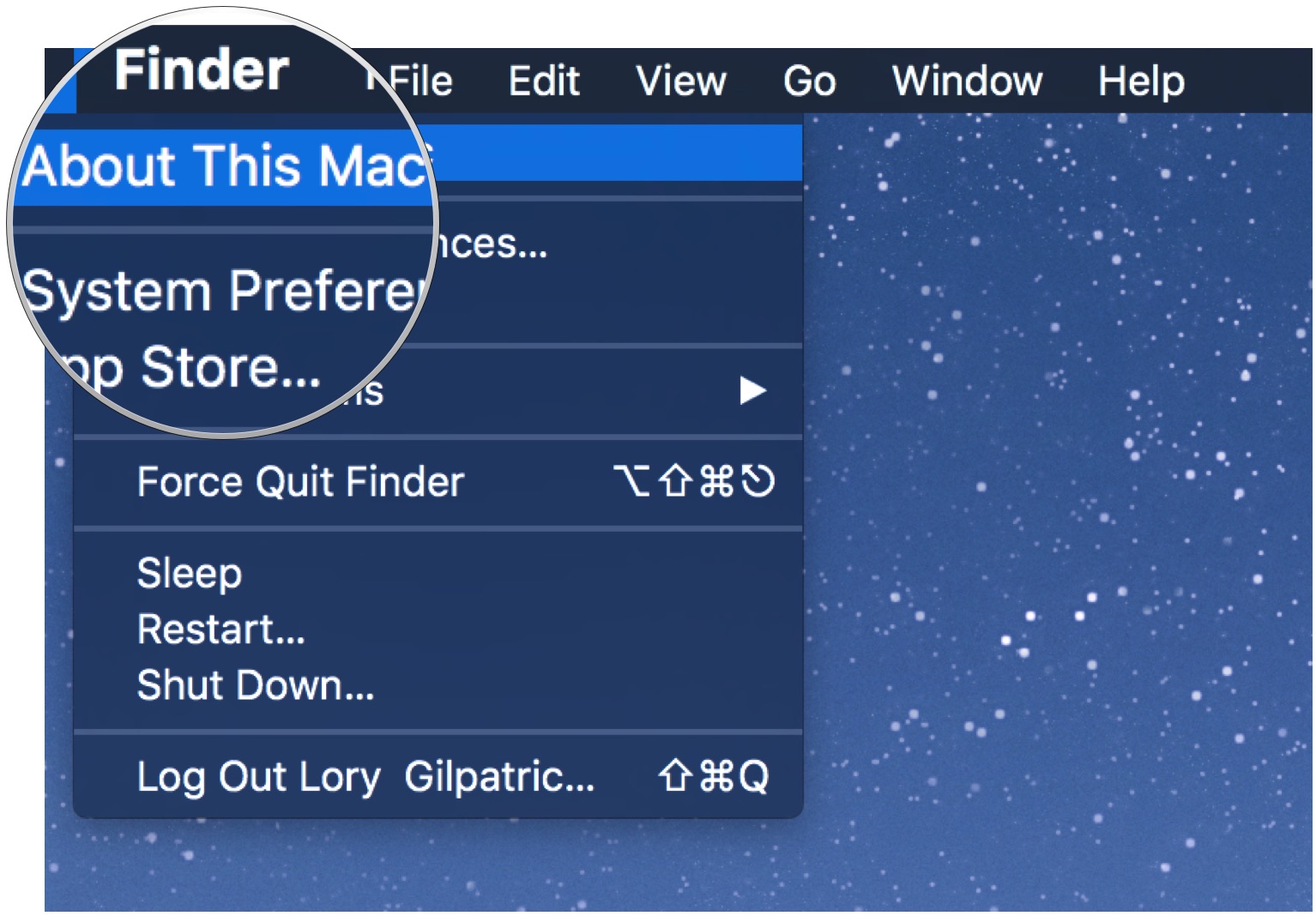 Source: iMore
Source: iMore -
Select Storage.
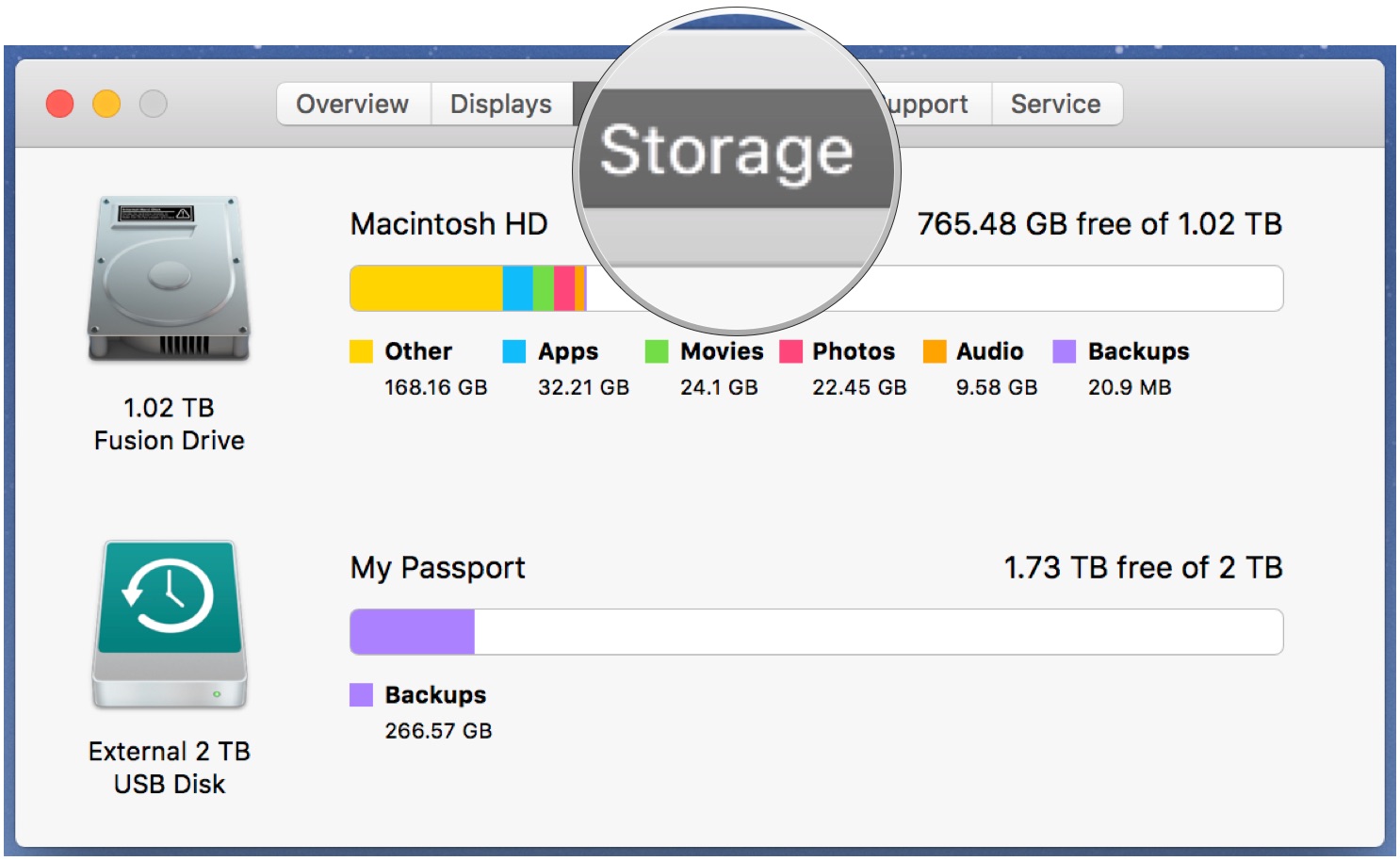 Source: iMore
Source: iMore
Your Mac breaks down its storage categories as follows: Apps, Movies, Photos, Audio, Backups, and — that annoying, undescriptive category — Other.
How to remove buried files
Now that you know how much space your Other files are taking up, it'southward time to reduce their footprint on your Mac. You lot tin start past removing items you don't demand, including caches for your spider web browser, saved Apple Music streams, and photograph previews.
A note on deleting enshroud folders: You lot only want to delete old and unnecessary files, every bit current cache files shop your preferences. We strongly recommend merely deleting enshroud files from old apps.
- Click on your desktop or select the Finder icon from the Dock.
- Select the Go menu in the upper left corner of the screen.
-
Click on Become to Binder.
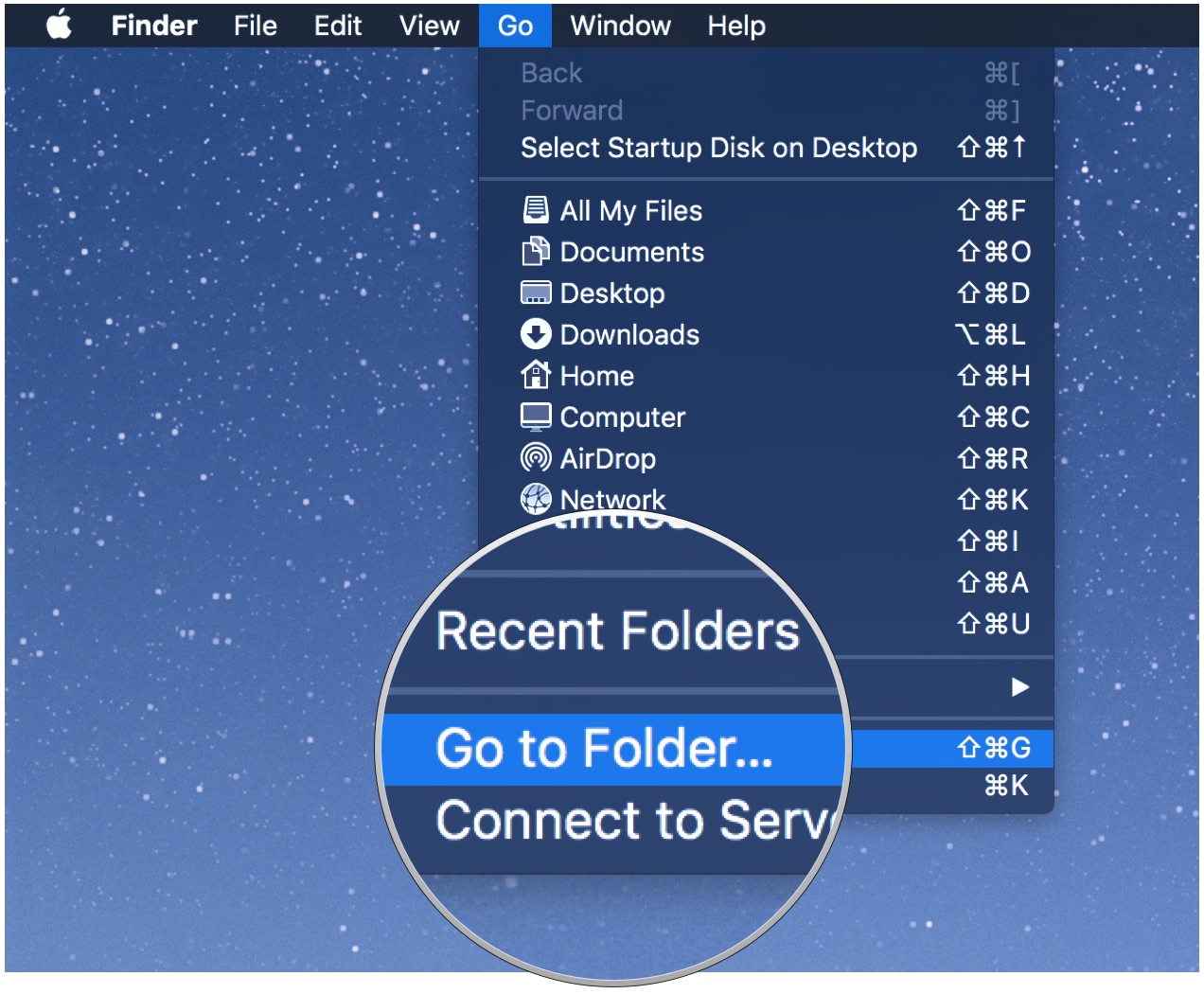 Source: iMore
Source: iMore -
Blazon ~/Library/caches into the text box. A list of caches from agile apps will appear on your desktop.
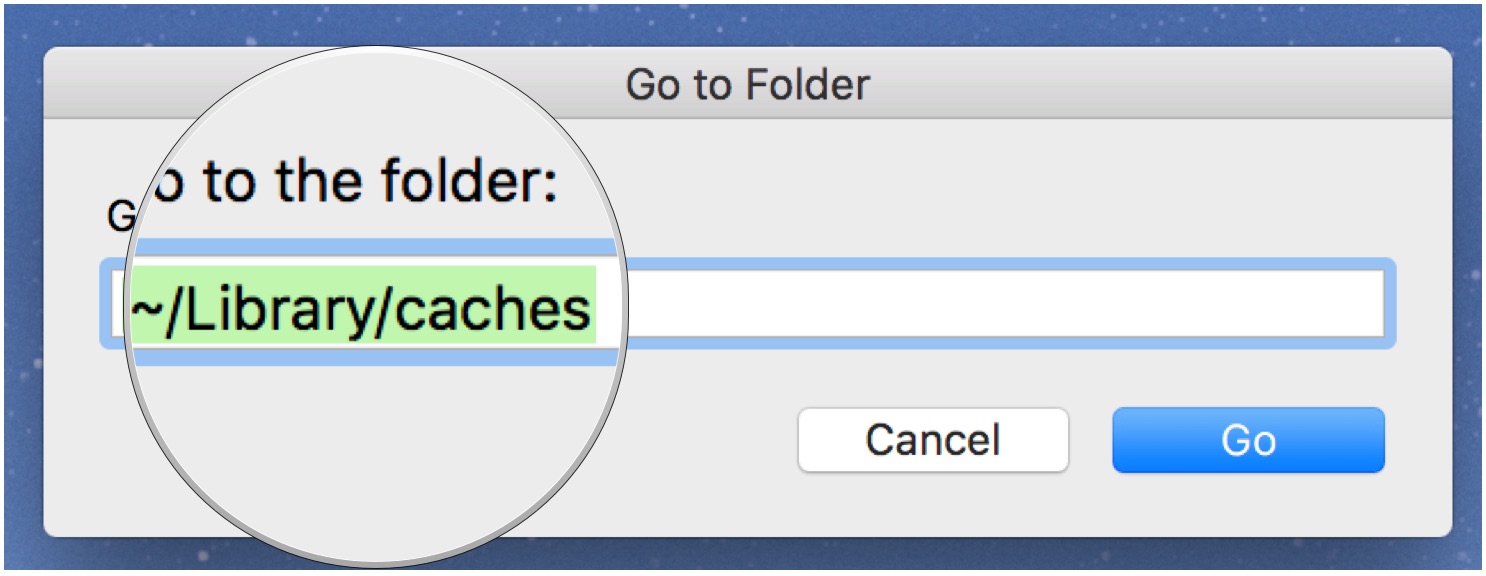 Source: iMore
Source: iMore - Select the app folder you wish to remove the cache from.
- Right-click (or control-click) on the app folder.
-
Select Move to Trash.
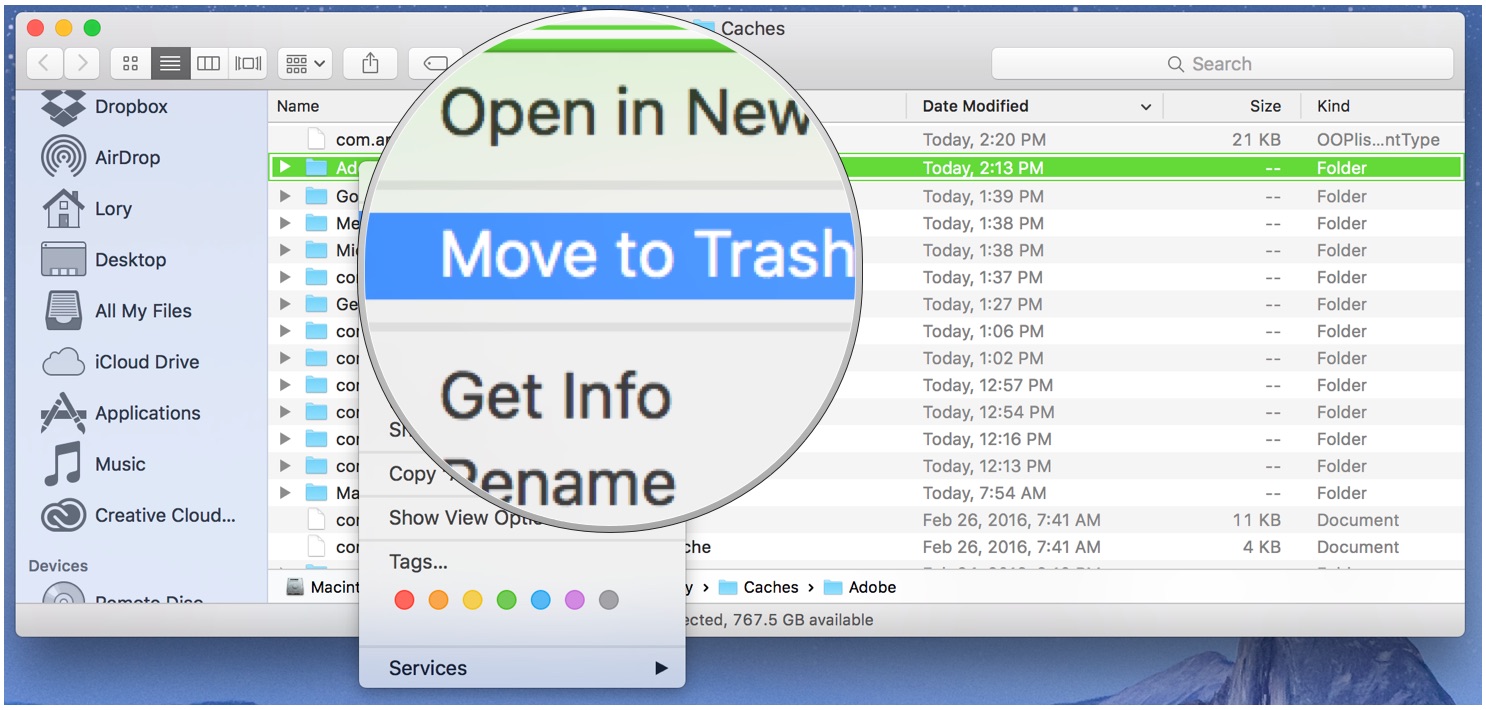 Source: iMore
Source: iMore
How to remove downloaded files
Chances are, your Downloads folder is blimp with Other-type files, including installer packages, documents, and folders you take already made copies of somewhere else. If yous desire to make some room on your Mac, it may be time to make clean out your Downloads folder.
- Click on your desktop or select the Finder icon from the Dock.
- Select the Go menu in the upper left corner of the screen.
-
Click on Downloads.
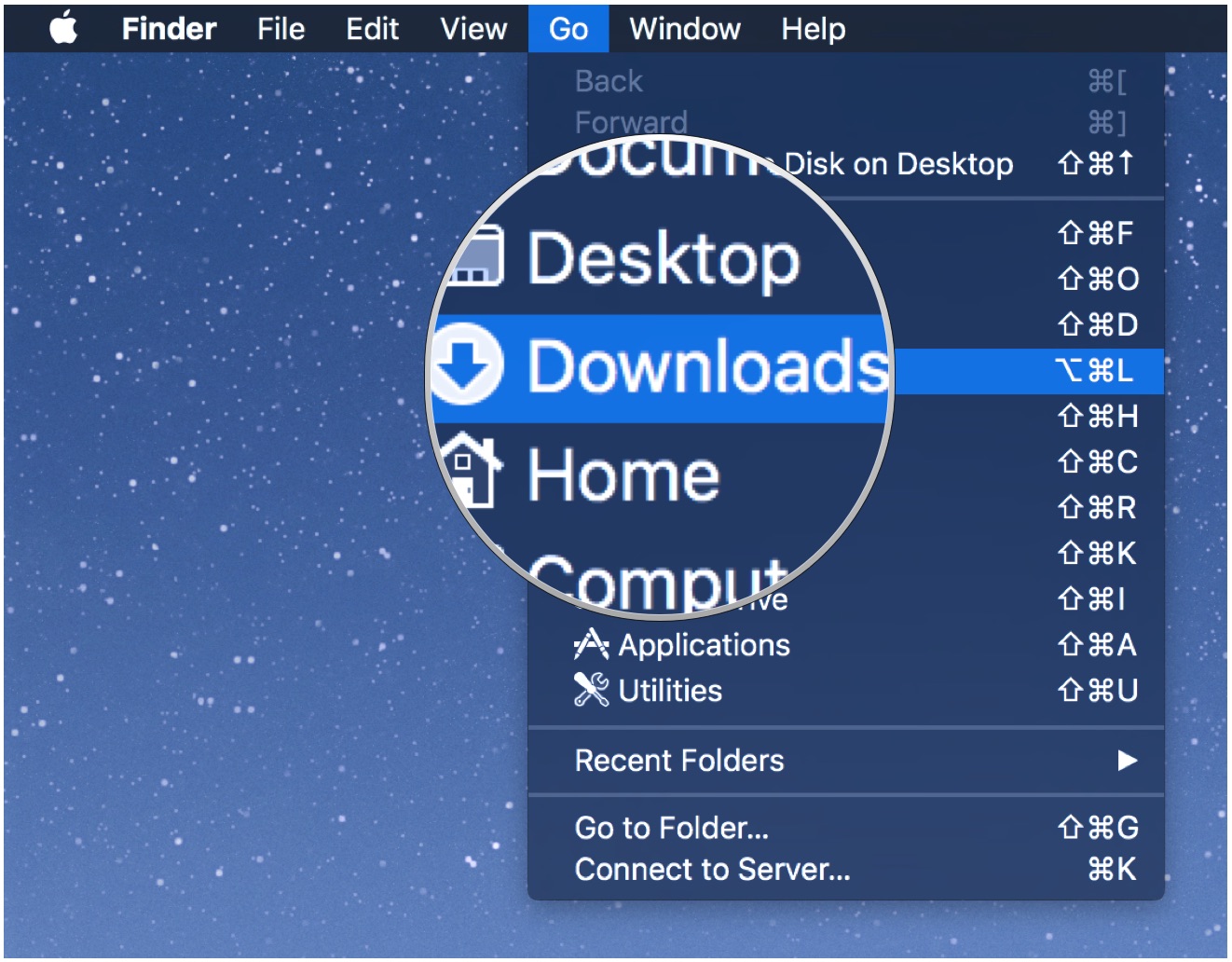 Source: iMore
Source: iMore - Select the file you lot wish to remove.
- Right-click (or control-click) on the file.
-
Select Move to Trash.
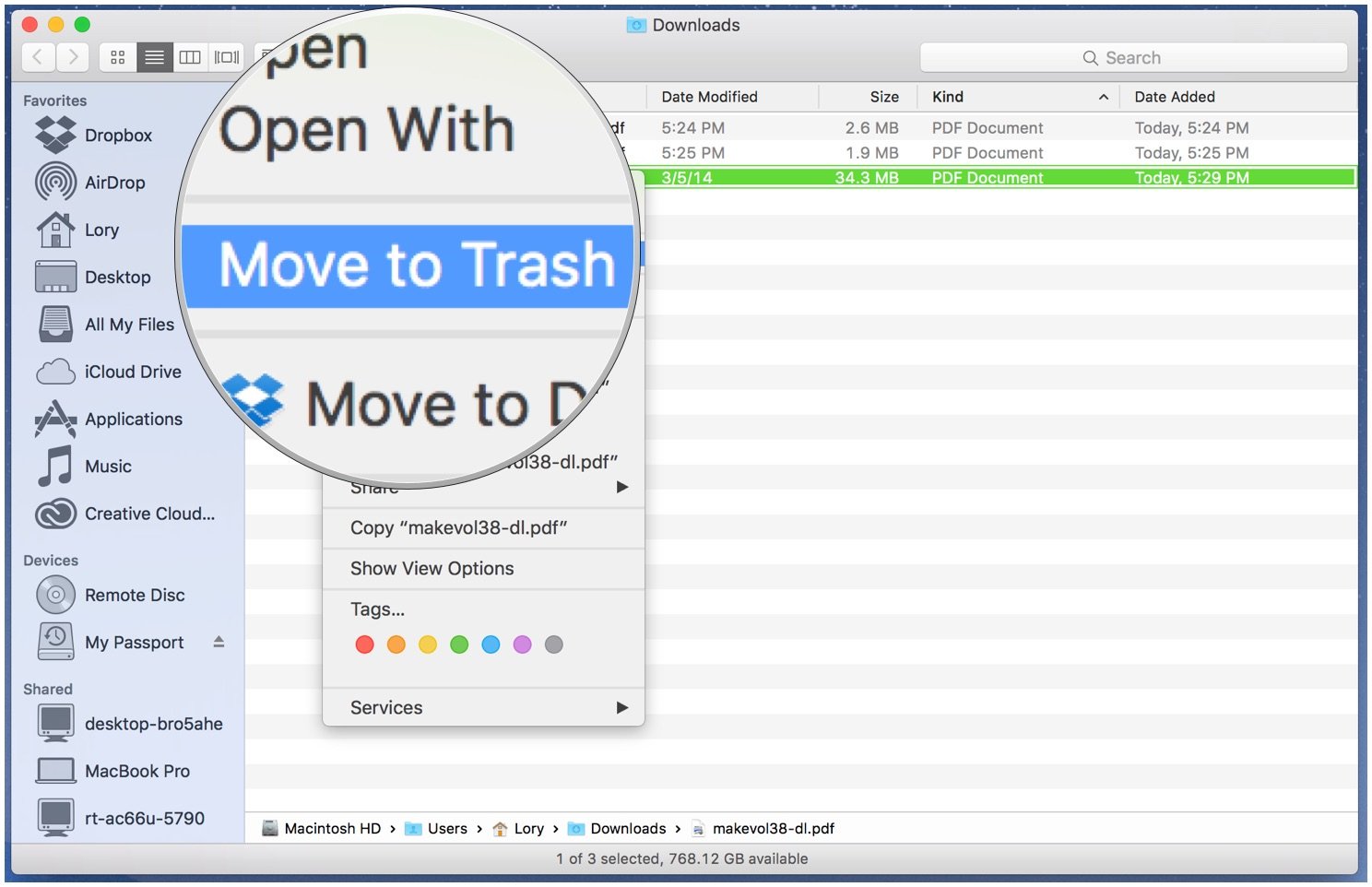 Source: iMore
Source: iMore
If you want to salve a file from the Downloads binder but don't want information technology clogging your drive, consider moving it to an external hard drive or flash drive, or uploading it to an online storage choice like Dropbox.
How to delete old device backups in iTunes
If y'all tend to get new iOS devices fairly regularly, y'all may have unnecessary device backups stored on your computer via iTunes. Backups take up 4-5GB each, on boilerplate; there's no need to hold on to older device backups if you lot no longer have the device or have it stored in iCloud.
How to delete an iPhone or iPad backup from iTunes
Third-party software that tin help
While you don't demand any tertiary-party app to "clean" your Mac, in that location are some very handy arrangement access tools out in that location that brand information technology easier to regularly remove unwanted files.
CleanMyMac three
With CleanMyMac, you have like shooting fish in a barrel access to a list of features that help you keep your Mac free of unnecessary junk. It scans your entire system and recommends files you should delete based on how onetime they are and whether they are considered unnecessary to your workflow. It'southward a lot like Apple'south Optimized Storage, but with a few boosted features. My favorite is the recommendation to delete all content related to an awarding. Sometimes, y'all'll cease up with a couple of files left behind by an app when you delete it. CleanMyMac provides a one-button purge of everything associated with that app.
$39.99 - Download Now
DaisyDisk
DaisyDisk scans your Mac and gives y'all a pie chart that makes it easy to see what files are using upwards the most space. You can place files that are in the Other storage category and elevate them to the delete box.
$9.99 - Download Now
Onyx
Onyx is a robust Mac organization access tool that, in-function, can delete caches, logs, temporary items, and other files that find their way into the Other storage category.
Costless - Download Now
Cocktail
Cocktail is another useful system access tool that you can apply to articulate caches, purge memory, and manage hidden Apple tree app settings, which might be automatically sending files into the Other category abyss.
$19 - Download Now
Questions?
Still having trouble with Other? Allow us know in the comments.
Nosotros may earn a commission for purchases using our links. Learn more.

Silicone simplicity
Review: Simply slip a Bluebonnet example on your AirTag and go
Soft, stretchy, and bright blue, the Bluebonnet AirTag Instance is a straightforward solution that keeps your AirTag safely attached to just about anything. Information technology also displays both sides of the AirTag so your personalization shines through.
what is taking up space on my macbook
Source: https://www.imore.com/how-find-and-remove-files-other-category-mac







Posting Komentar untuk "what is taking up space on my macbook"